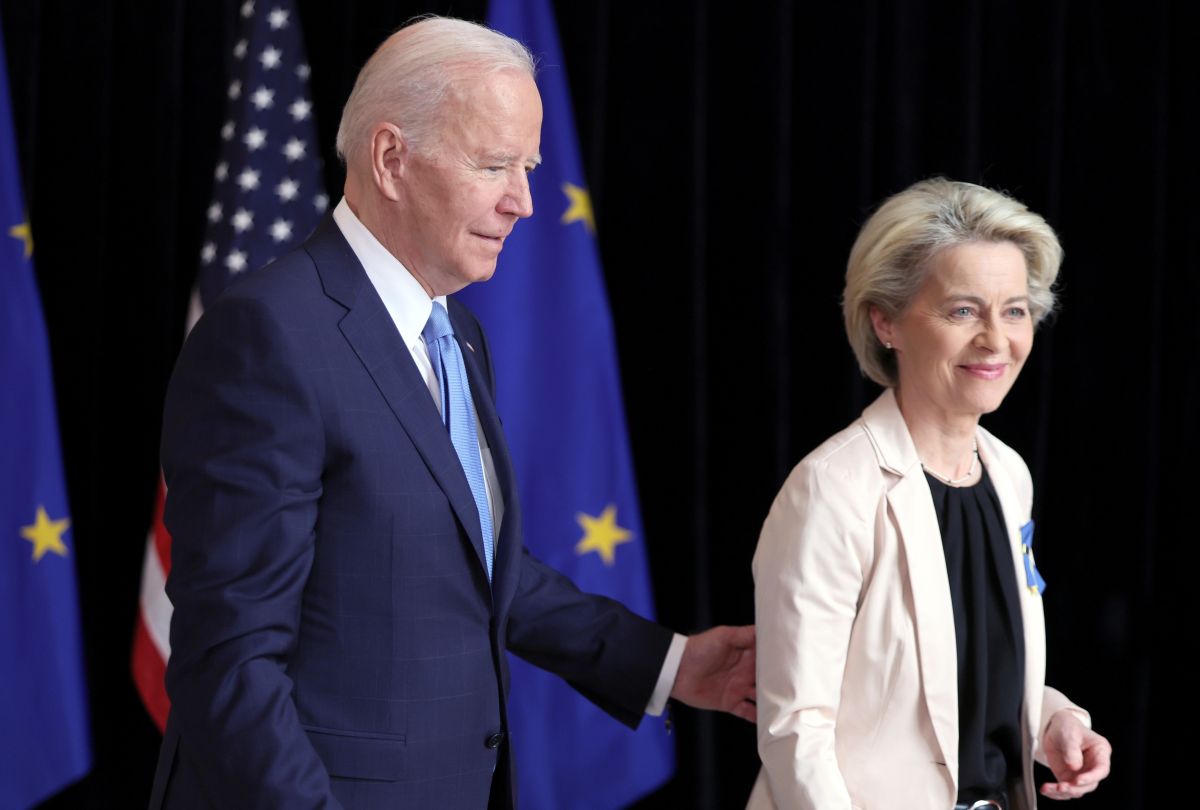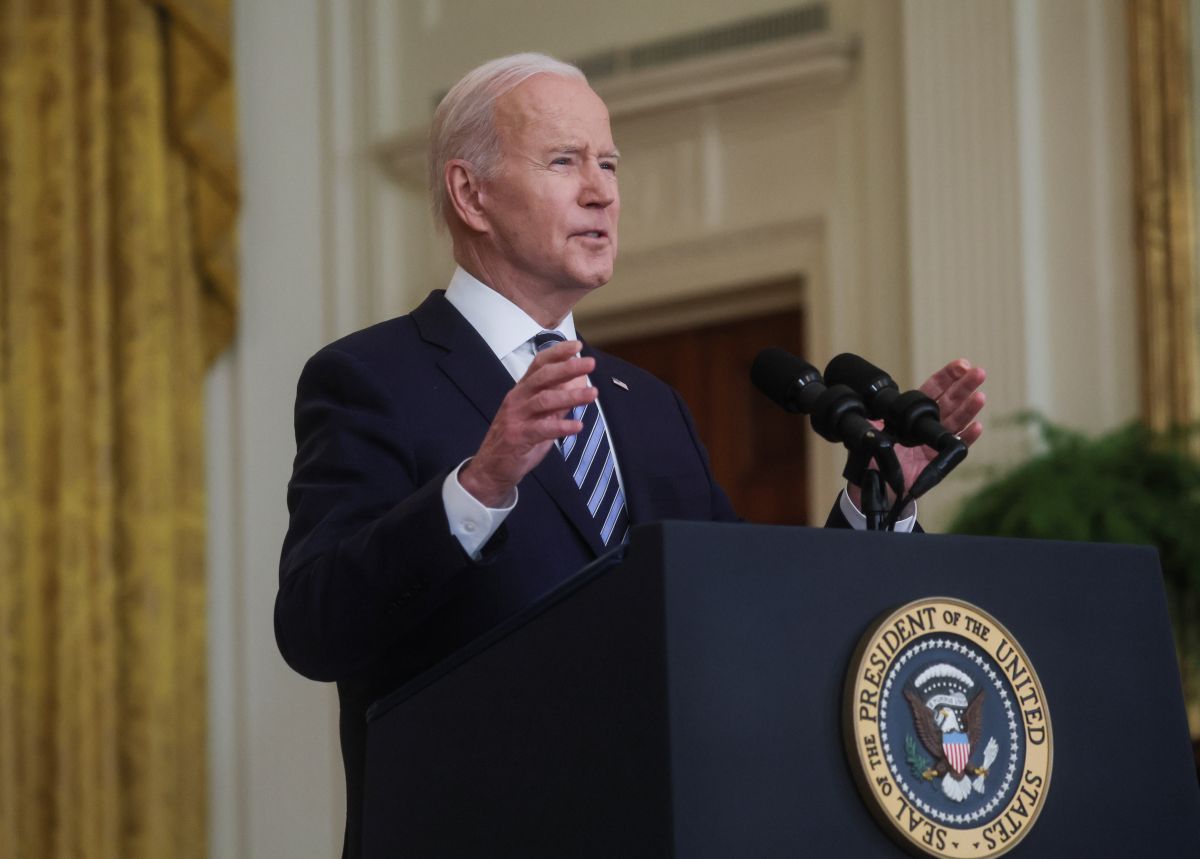Biden Meets with NATO, EU, and G7 Partners
On 24 and 25 March, U.S. President Joe Biden met in Brussels with his counterparts from NATO, the G7, and EU countries and with the heads of these institutions. Biden is trying to persuade European countries to impose further sanctions on Russia and cut off its energy resources. The U.S. pledged to help with the transition by strengthening cooperation in the energy sector and taking joint initiatives to prevent a global food crisis.
 EVELYN HOCKSTEIN/ Reuters/ FORUM
EVELYN HOCKSTEIN/ Reuters/ FORUM
What were the goals of the U.S. in the consultations with its European allies?
The United States is striving to continue the sanctions policy currently pursued by Western and other countries against Russia and Belarus in response to their attack on Ukraine. They argue that Russia’s failure to achieve the goals of the invasion so far is increasing the risk of an escalation of hostilities, for example, through the use of chemical weapons or attacks on arms convoys to Ukraine. For this reason, they see it necessary to unanimously impose further sanctions on Russia and Belarus and to break those countries’ economic cooperation, as well as to strengthen Ukraine’s defence capabilities by supplying additional weapons and increasing the credibility of NATO deterrence on its Eastern Flank. To make it easier for European countries to make decisions that may have negative consequences for their economies or energy security, the U.S. seeks closer cooperation in areas of risk, such as ensuring the supply of LNG and investing in European energy infrastructure.
What was agreed at the meetings with Biden?
The leaders of NATO countries decided, among others, on the creation of four new battle groups (one each in Slovakia, Romania, Bulgaria, and Hungary). In their statement, the U.S. authorities indicated that they would develop plans to strengthen the Alliance’s defence with additional forces and capabilities ahead of the June summit. Meanwhile, the leaders of the EU and the G7 announced the creation of an initiative aimed at tightening the sanctions regime and preventing the avoidance of sanctions by entities from Russia and Belarus. They also confirmed that the Russian Central Bank would not be able to use its foreign reserves, including gold, in transactions. This is to prevent support for the Russian economy and limit the financing of the war. The U.S. and the European Commission also announced the establishment of the Task Force for Energy Security. Its aim is to reduce European dependence on Russian fossil fuels by diversifying and ensuring LNG supplies (deliveries of at least 15 billion cubic metres of gas in 2022 have been announced), while striving to reduce the demand for natural gas.
What steps is the U.S. taking in response to the invasion?
In coordination with allies, on 24 March the U.S. announced new sanctions against Russia, including personal sanctions on 328 members of the State Duma and sanctioning the Duma itself as an institution, and on the head of Sberbank, 17 members of the Sovcombank board, the oligarch Gennady Timchenko and his family and companies, and 48 companies from the Russian defence sector. Biden also said Russia should be excluded from the G20. This is another step by the U.S., which so far has banned the import of energy resources from Russia and the export of luxury goods. It also decided to revoke “most favoured” trading partner status (the move suspends normal trade relations and reverts to high tariffs on Russian goods) and cut it off from funding from the IMF and the World Bank. In addition, the U.S. imposed sanctions on the largest Russian financial institutions and banks, including the Central Bank, and on several dozen representatives of the Russian elite (including Vladimir Putin), their families, and companies. It is not clear whether Biden’s naming Putin as a “war criminal” and the official statement by the administration that Russia is committing war crimes in Ukraine may result in closer cooperation with the International Criminal Court. Although the U.S. is not a member, but cooperated with it, for example, during the presidency of Barack Obama in cases concerning crimes committed in African countries.
What further military and humanitarian aid will the U.S. provide Ukraine?
Since taking office, the Biden administration has provided Ukraine with military aid worth $2 billion, which is the equivalent to all aid in 2014-2020. Of this, more than $1 billion has been allocated since the Russian invasion on 24 February. With the funds, the U.S. has provided Javelin anti-tank launchers and missiles, Stinger anti-aircraft missiles, and Switchblade drones (loitering munition). The U.S. authorities announced the state’s readiness to provide Ukraine with further tranches of military aid, encouraging allies to take similar actions. The U.S. also is conducting consultations on the provision of advanced air defence systems known to Ukraine, including the 9K33 Osa and S-300P, with allies who have such systems, while compensating them for drawdowns in their own defence capabilities caused by the transfer of weapons. The U.S. is also providing humanitarian aid for Ukraine and countries hosting the most refugees, donating nearly $300 million since the beginning of the invasion. Biden also announced that the U.S. will provide further funds for this purpose in the amount of $1 billion and will accept 100,000 refugees from Ukraine.




.jpg)